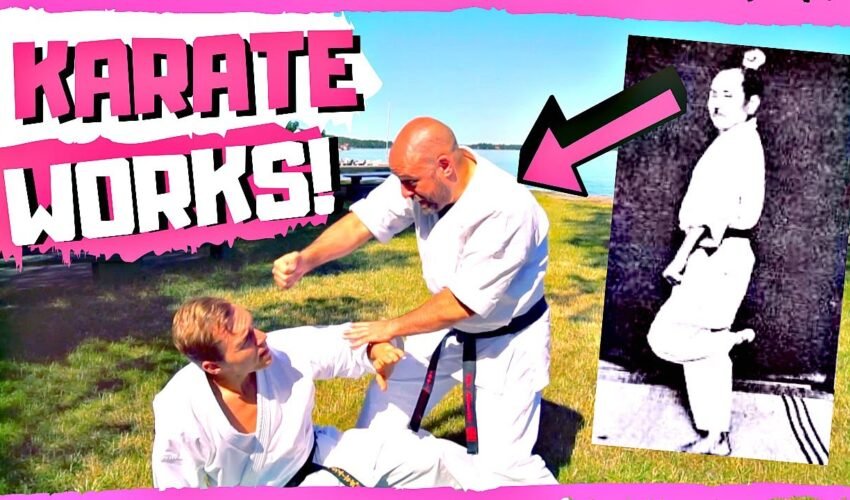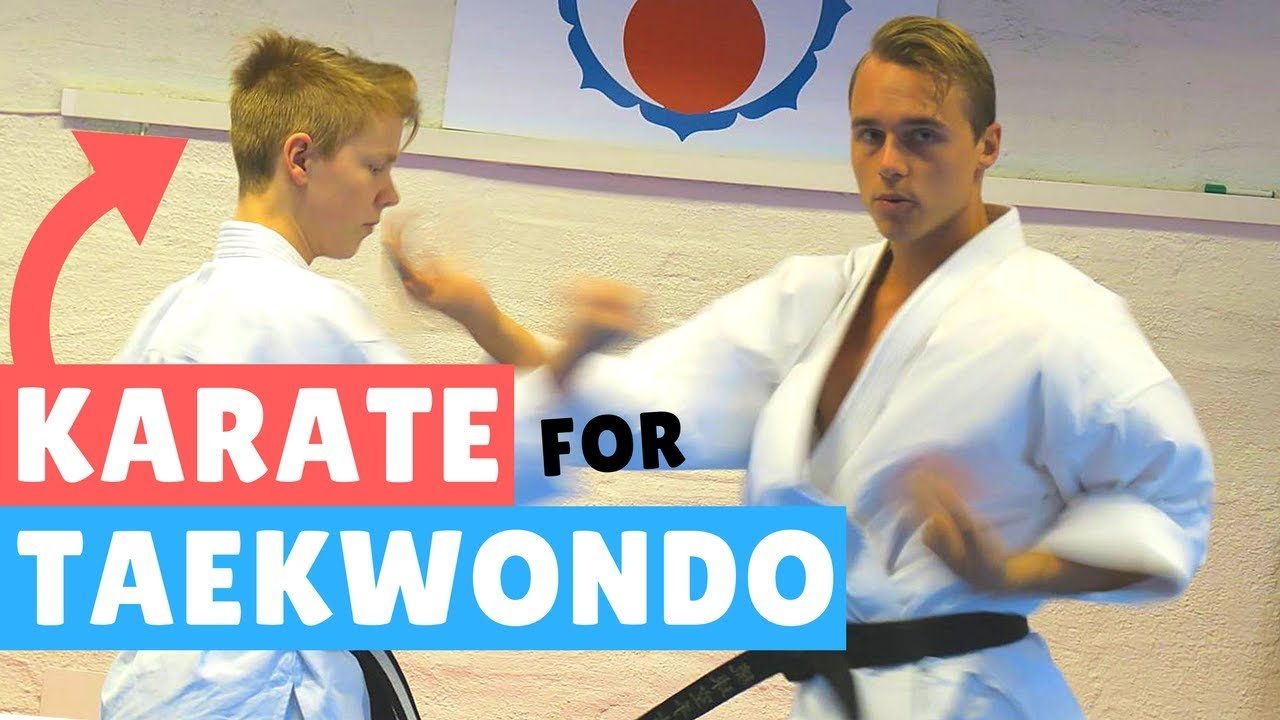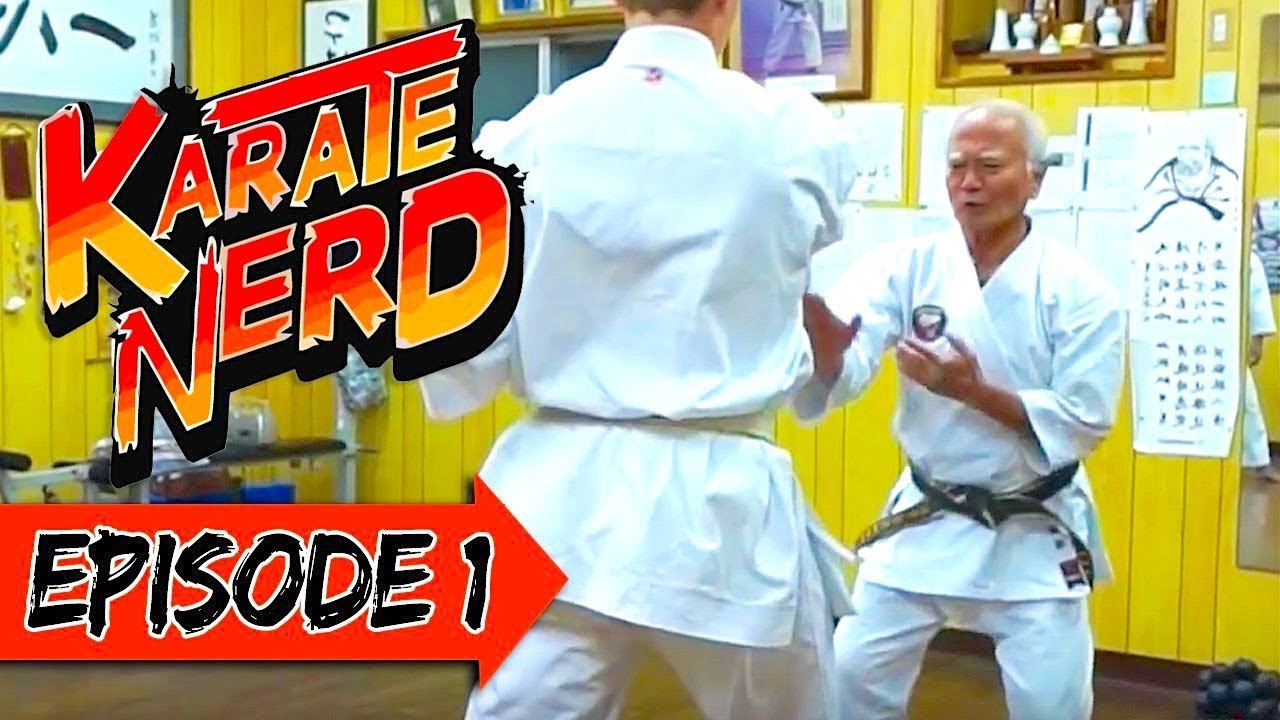Gankaku (Chinto) Kata Bunkai Explained by Iain Abernethy
In a fascinating video uploaded by Jesse Enkamp, known as “The Karate Nerd,” on August 1, 2019, he is joined by Sensei Iain Abernethy to explore the practical application of the complex movements found in the ancient karate forms of kata, specifically Gankaku or Chinto.
Having been watched over 66,000 times, the video delves into an examination of the seemingly impractical posture where a practitioner stands on one leg, questioning its effectiveness in a real fighting situation due to the inherent instability.
In their discussion, Abernethy demonstrates how this “weird movement” could be used in a real-life self-defense scenario. He suggests that the movement could be employed to move an opponent’s arm out of the way while simultaneously exposing their head for a hammer fist strike. This movement also allows for knee strikes to either the thigh or groin of the opponent. As Abernethy performs these actions, he reveals how closely they mirror different postures found in the kata form.
As they continue, Abernethy and Enkamp delve deeper into the philosophy behind kata. They discuss how kata movements can provide a structure, offering different responses based on an opponent’s reaction to a strike. Hence, rather than binding the practitioner to a fixed sequence, the kata provides an adaptable framework for engaging in combat.
Abernethy and Enkamp conclude by emphasizing the importance of adaptability – termed ‘henka’ in Japanese – in a real fight. They stress that kata should be considered as an example rather than a rigid formula, providing variations to counter a range of potential responses from an opponent.
In conclusion, Abernethy and Enkamp’s exploration of Gankaku (Chinto) Kata Bunkai proves an enlightening analysis of the practical implementation of kata techniques in real-life combat situations, even when the movements may appear strange or impractical at first glance.
[postx_template id=”84″]
The Karate Nerd: Jesse Enkamp
Jesse Enkamp, also known as The Karate Nerd, is a revered name in the world of Karate. Born in Sweden, Enkamp dived into the martial art at a young age and has since dedicated his life to mastering and preserving traditional Karate. His commitment is evident in his YouTube channel, his books, and his international seminars. Not only does he incorporate historic and scientific perspectives into his teachings, but he also emphasizes the development of one’s self through Karate. Jesse Enkamp is truly a guiding light for all Karate enthusiasts.
[postx_template id=”177″]
Practical Applications of Karate within MMA and Fighting Sports
Karate, a traditional martial art, has found its footing in modern Mixed Martial Arts (MMA) and other fighting sports. In Karate, practitioners train in striking techniques, such as knee strikes, punches, and kicks – skills highly valued in MMA. Fundamentally, Karate emphasizes the principle of using one’s opponent’s strength against them, a tactic seamlessly applicable in contemporary fighting sports.
Karate’s Reputation in MMA
Despite an initial skepticism of Karate in MMA and fighting sports, successful fighters like Lyoto Machida and Stephen Thompson have demonstrated Karate’s practicality in real competition. As a result, karate is now viewed as a formidable and respected discipline within these circles.
[postx_template id=”85″]
Practical Japanese Martial Arts History
The emergence of Bushido in medieval Japan led to the development of various martial arts. Initially, these combat techniques were necessary for survival and warfare. With the Meiji Restoration, martial arts, like Judo and Karate, evolved, focusing on self-discipline and spiritual growth.











Thanks for your comments! Happy to hear you enjoy learning Karate.
Happy to hear you enjoy learning Karate.  Visit my website for more Karate knowledge: http://www.karatebyjesse.com
Visit my website for more Karate knowledge: http://www.karatebyjesse.com 
A very insightful karateka sensei abernethy . I had the pleasure of training with him this weekend in Derby UK and above all things his enthusiasm is infectious and makes you want to train hard . Humour is always a great way to communicate but his knowledge is second to none . You must try to train with him .
Incredibly helpful video, with a lot of information packed into a brief clip. I'm 2nd Dan in WT Taekwondo, and I've been analyzing the real practical applications of the forms ("poomsae") for a couple of years now. WT doesn't traditionally teach practical applications (it's much like 3K karate in that regard), but I've come to believe the masters who created our poomsae probably did have them in mind.
This sequence, for example, appears with some modifications in the Keumgang (2nd Dan) and Pyongwon (4th Dan) poomsae. The execution and follow-up in both forms are different from Chinto/Gankaku (and from one another), but in both cases, the sequences were clearly inspired by this kata and follow the same principles in terms of follow-up/finish.
Researching the kata and quan of TKD's predecessor arts (if that statement makes me a heretic, so be it!) has helped me understand the true meaning behind the poomsae – and yours and Iain's work have been a major part of that effort, so thank you and tack så mycket!
Thanks bro..i'm
learning Gankaku now.
there is a poomsae in taekwon do called kumgang that has something very similiar to this, and i did not understood how to aplied it, i ended up thinking .. could it be a swip to the leg while controling the arm?… mmm no makes no sence… then i saw this… it may a knee but with arm control
Love to see more of a colab between these 2 great practitioners
You have opened my eyes and my mind. Thank you.
Kata exploration is one of the many the beauties of karate. An endless journey of self development. As we age our bodies need to adapt to how we move making corrections when needed. Staying in motion is an aim to strive for.
Oss. Thanks.
Kata is like learning mathematics. We practise basic maths till there is instant recall.Then we use this knowledge ( instant recall) to create strategies ( thinking) to solve mathematical problems. The strategies when successful become new knowledge. The Bunkai is strategy built upon kata (knowledge) or a combination of katas. Lian demonstrates this as a master strategist.
This is a similar concept of "kaiten nage" from aikido, redirecting the opponent's arm on a circular movement, then manipulating his neck from behind, but with a knee strike instead a projection. I like how these japanese martial arts are connected.
For my take, I believe it has the same principle as taekwondo's leg lifting
https://youtu.be/GD4xsNG_0Iw
In my experience, I have using leg lifting to fight animals several times. dogs three times, two are keep attacking so I launch my front kick to their mouth, one is scared when I do that. cock one time, it is immediately scared when I do that pose with intent to strike. goose one time, it is keep attacking, but I can keep a distance by doing front kicks to the head and some footworks, until it got scared. it is a very effective move to fight animals that isnt as big as human in size
Karate is so awesome, coolest martial art in my opinion

Fantastic stuff!
Two great Sensei together. Great.
I would certainly clicked "like" but that credit has to go to Abernathy Sensei. Very cool Enkamp Sensei!!!
I love doing katas the high blocks and down blocks and and outside block and a the double blocks open hand grips
Excellent video Senseis Jesse & Iain



I think sense of these movements now is forgotten and all bunkays are just fantasies. But I liked your video where You explained kata and showed movements of kata as wresting techniques and throws and takedowns not punches. I think it looks like the truth
Im now learning this kata. I had my own theories and ideas of the bunkai. Thank you for this video Jesse!
All I know is Japanese karate-IMHO, kata is the only way for masters to pass down the important things.